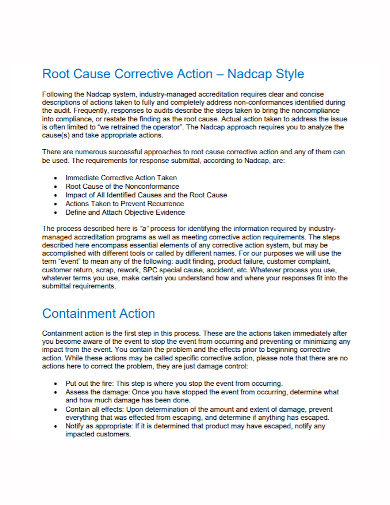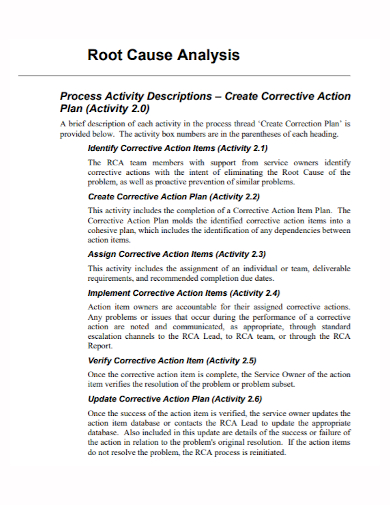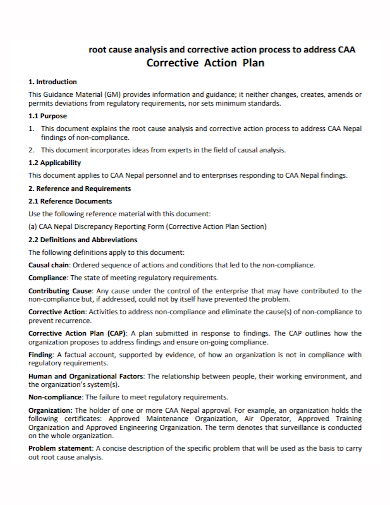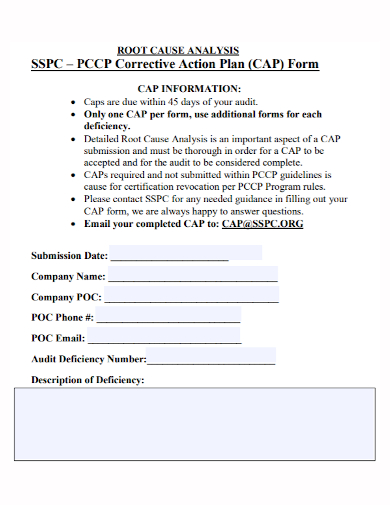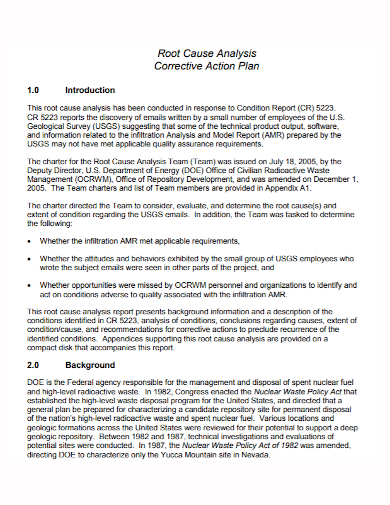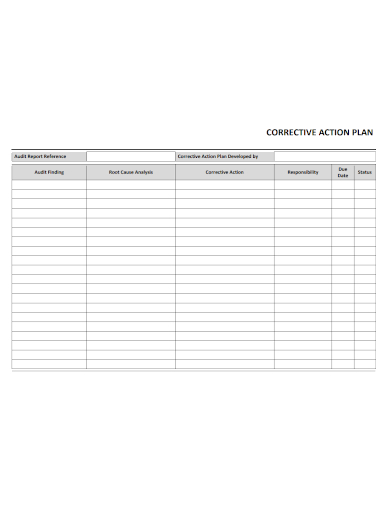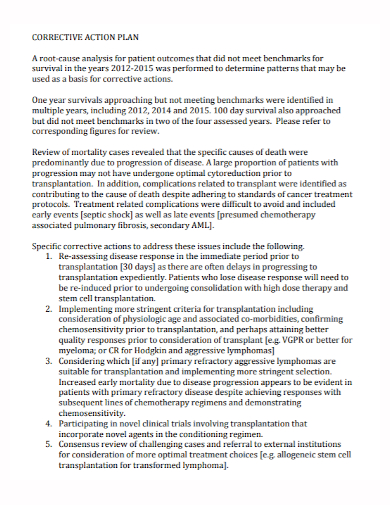Organizations occasionally encounter problems of non-conformance. What separates effective companies from ineffective ones is what they do when this happens. Correcting the root cause is not only necessary, but also critical for improving products, gaining a competitive advantage, and increasing consumer happiness. That’s why completing a root cause analysis and taking corrective action is critical to problem resolution success. Your manufacturing company’s internal and external procedures are strengthened by using this root cause and corrective action method, which gets to the root of the problem rather than managing the effects.
The first thing we do when we identify a problem is trying to remedy it right away. Typically, a simple and quick remedy is used. However, this does not guarantee that you will not run into the same issue again. Or that the issue you just corrected won’t resurface and cause new issues. Right? The truth is that you can’t genuinely solve a problem until you figure out what’s causing it in the first place. After that, you can take the necessary corrective action. Corrective action and root cause analysis should be treated as a bundle deal.
10+ Root Cause Corrective Action Plan Samples
1. Root Cause Corrective Action Plan
2. Root Cause Analysis Corrective Action Plan
3. Sample Root Cause Corrective Action Plan
4. Root Cause Corrective Action Verification Plan
5. Root Cause Corrective Action Plan Form
6. Root Cause Corrective Preventative Action Plan
7. Root Cause Contractor Corrective Action Plan
8. Standard Root Cause Corrective Action Plan
9. Basic Root Cause Corrective Action Plan
10. Printable Root Cause Corrective Action Plan
11. Non-Compliance Root Cause Corrective Action Plan
Root Cause and Corrective Action
What is Root Cause and Corrective Action (RCCA)? RCCA is a method for carefully analyzing a problem and determining its root causes. It leads to the discovery of the manufacturing process’s cause and effect link. Rather than blaming individuals for errors, RCCA seeks to examine each step of a procedure to fully comprehend where errors may occur, track patterns, and more. It is an essential component of a good compliance program’s auditing and monitoring element, as well as the audit and investigation procedures.
Internal review organizations that conduct claims, arrangements reviews to assess systemic error patterns, or corporate integrity agreements with quality-of-service–, patient safety–, or software systems–related reviews of entities that settled with the government and are subject to external monitoring or review, for example, may consider conducting an RCCA.
So, before you get started, make sure you’re solving the appropriate problem. Inefficient or ineffective issue solving can occur for a variety of reasons. And it frequently occurs when we are unable to:
- concentrate on tackling significant problems
- utilize a good problem-solving strategy
- enlist the help of the necessary individuals or “opinion leaders”
- uncover the root reason using relevant problem-solving abilities and techniques
- determine how much it will cost the organization to identify the problem and implement the remedy
- automate or connect the corrective action system to other business processes
- proceed with caution
An independent reviewer is often required to disclose the causes for errors and trends found in the billing and coding systems or any patterns of errors or weaknesses in arrangement systems in the context of corporate integrity agreements or integrity agreements. It is critical that root cause analyses of potential and identified issues are actually conducted and done well incorporate integrity agreements with quality control systems, quality review systems, and quality assurance program requirements that mandate reviewing, tracking, and completing root cause analyses of potential and identified issues. Incidents of poor quality of care must be thoroughly investigated, and root cause investigations must be done.
FAQs
What is the purpose of having a root cause correction action?
The solution created to eliminate the cause of the discovered nonconformity and permanently resolve the problem(s) it causes is known as Root Cause Corrective Action (RCCA). Because you can’t prevent the impacts of the incident as it happened, the root cause of corrective action can also be considered as sustaining. However, the steps you take today can help avoid such unfavorable situations from happening again.
How can an RCCA help in auditing?
Auditors must typically understand why processes do not operate and why internal controls do not function as they should in-process audits and systems evaluations that focus on risk and internal controls—they must uncover the gaps. When auditors discover that the implemented control activity or monitors aren’t working properly, it is extremely useful. It can be useful in weeding out systemic deficiencies that contribute to malfunctioning during the deployment of a new system or during the pre-implementation phase.
What are some things to consider when determining and implementing root cause corrective action?
It includes viability, effectiveness, team involvement, focuses on the big picture, and contingency plan.
Problems might appear in a variety of ways. However, in order to effectively cure a problem and take the most effective root cause corrective action, you must first determine what the true root cause is. And the best way to do that is to gain a thorough understanding of your company and the fundamental causes of any issues you may encounter. Only then will you be better prepared to deal with difficulties as they arise and build a brighter future for your company.
Related Posts
FREE 12+ Sample School Action Plan
FREE 12+ Sample Employee Action Plan
FREE 12+ Construction Action Plan Samples
FREE 11+ Action Plan Templates
FREE 10+ Quality Action Plan Samples
FREE 10+ Nursing Action Plan Samples
FREE 10+ Education Action Plan Samples
FREE 8+ Sample HR Action Plan
FREE 6+ Child Protection Action Plan Samples
FREE 35+ Sample Action Plan
FREE 10+ Risk Management Action Plan Samples
FREE 10+ Health Care Action Plan Samples
FREE 10+ Compliance Action Plan Samples
FREE 10+ Environmental Action Plan Samples
FREE 9+ Training Action Plan Samples

